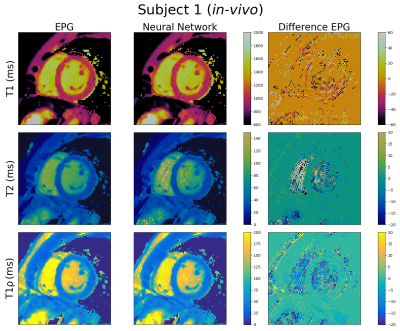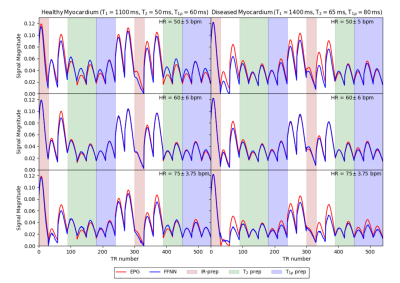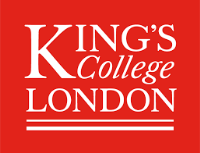Thomas James Fletcher1, Carlos Velasco1, Talent Fong1, Gastão Cruz1, René Michael Botnar1, and Claudia Prieto1
1School of Biomedical Engineering and Imaging Sciences, King's College London, London, United Kingdom
1School of Biomedical Engineering and Imaging Sciences, King's College London, London, United Kingdom
A feedforward neural network is proposed to generate T1, T2 and T1ρ dictionaries for cardiac Magnetic Resonance Fingerprinting in 3 seconds. The model is tested on simulations and in-vivo data, showing excellent agreement with mean relative errors of 1.7% to 5.1% for myocardium.

Fig. 4: Short axis view of T1, T2 and T1ρ maps in a healthy subject (subject 1) with a heart rate of 64.3 bpm and a standard deviation of 4.4 bpm. Maps for T1, T2 and T1ρ are shown that are reconstructed using dictionaries generated from EPG simulations and the neural network. The mean relative errors for the myocardium are 1.7%, 4.8% and 5.1% for T1, T2 and T1ρ respectively.

Fig. 2: Comparison plots of predicted cardiac MRF signal evolutions by the feedforward neural network (blue) against those simulated using EPGs (red). Fingerprints are plotted using both methods for healthy (left column, T1 = 1100 ms, T2 = 50 ms and T1ρ = 60 ms) and diseased (right column, T1 = 1400 ms, T2 = 65 ms and T1ρ = 80 ms) myocardium for 3 different RR sequences (50 ± 5 bpm, 60 ± 6 bpm, 75 ± 3.75 bpm).
